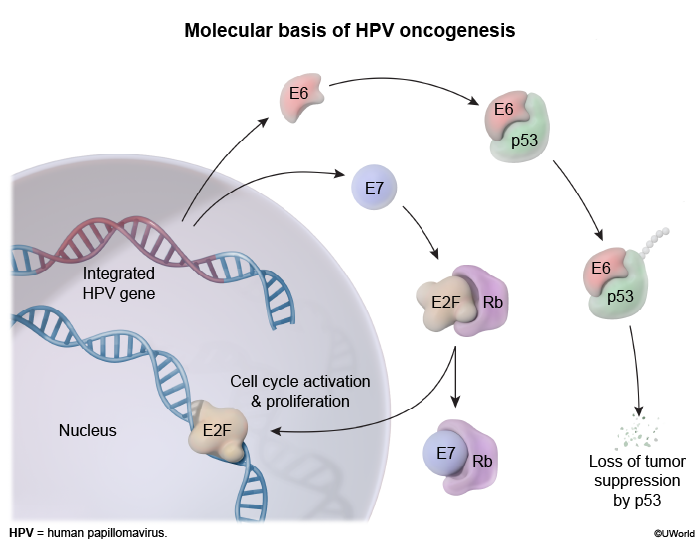Vulvar Cancer
Article Sections
Introduction
Vulvar cancer is a malignancy of the female external genitalia, which include the labia majora and minora, vaginal introitus, clitoris, and urethral meatus. The most common histologic type is squamous cell carcinoma (SCC), which typically presents in older women with persistent human papillomavirus (HPV) infection or lichen sclerosus.
Pathogenesis and risk factors
The most common type of vulvar cancer is SCC, which can develop via 2 independent mechanisms:
- HPV-dependent (most common): persistent HPV infection (particularly with high-risk types 16 and 18) causes squamous cell mutations via integration and expression of viral oncogenes (Figure 1). Oncogenesis from high-risk HPV is attributed to viral proteins E6 and E7, which inhibit p53 and Rb, leading to unregulated cell proliferation, dysplasia, and malignant transformation. Risk factors for HPV-related cancer are related to:
Continue Learning with UWorld
Get the full Vulvar Cancer article plus rich visuals, real-world cases, and in-depth insights from medical experts, all available through the UWorld Medical Library.
Figures

Figure 1
Tables
Table 1
Table 2